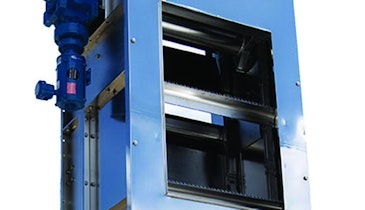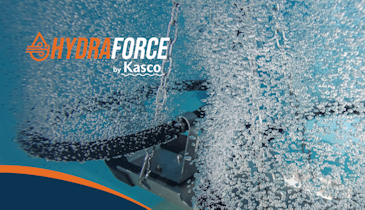
Interested in Treatment?
Get Treatment articles, news and videos right in your inbox! Sign up now.
Treatment + Get AlertsThe residential subdivision of Alto Lampa is a rapidly developing neighborhood located just outside of Santiago de Chile. The community is served by two wells, each with a flow of 800 gpm (50 liters per second), running one at a time. Both wells produce raw water with high arsenic concentrations that fluctuate between 0.015 and 0.030 mg/L, which is above the World Health Organization’s level of 0.010 mg/L. The system is managed by Aguas Andinas, the largest municipal water provider in Chile. In 2012, the project was awarded to EcoRiles who then contracted AdEdge Water Technologies to supply and start up the treatment system equipment.
The AdEdge arsenic treatment approach consists of two WaterPODs (containerized treatment systems), each with five 48-inch diameter carbon steel vessels arranged in a parallel configuration. The vessels are loaded with AdEdge’s Bayoxide E33 granular ferric oxide adsorption media. The E33 lets the arsenic remain bound to the media structure and does not become loose during backwash. The system includes chemical dosing and backwash recycle equipment built inside the WaterPODs. A section of WaterPOD 1 was partitioned to serve as a chemical room separated from the rest of the equipment to avoid corrosion from chemical off-gassing. Inside the chemical room, there are separate partitions for the two chemicals (sodium hypochlorite and hydrochloric acid) to further segregate the chemicals and avoid unintentional mixing. Sodium hypochlorite is added to oxidize the arsenic from trivalent to pentavalent; and hydrochloric acid is added to lower the pH and improve media life.
The second WaterPOD contains the equipment for the backwash recycle pump and bag filters. The backwash holding tank was situated outside of the WaterPODs. The system performs backwash of the vessels every 45 to 60 days to prevent hydraulic channeling and to remove any suspended solids that might have accumulated in the bed. Backwash operations are automatically controlled by an AdEdge InGenius control panel with PLC and HMI. The source of the water is treated water from the outlet of the distribution pumps.
The system was successfully started up in early August 2013. Recent testing of the water shows the treated water has nondetectable concentrations of arsenic.
About AdEdge Technologies
AdEdge has extensive experience in the removal of arsenic, iron, manganese, fluoride and uranium from water, and to date has installed hundreds of water systems for public, municipal, and industrial clients throughout all of North America as well as some projects in some of the most challenging locations in the world including China and Indonesia. For more information, visit www.adedgetech.com.





